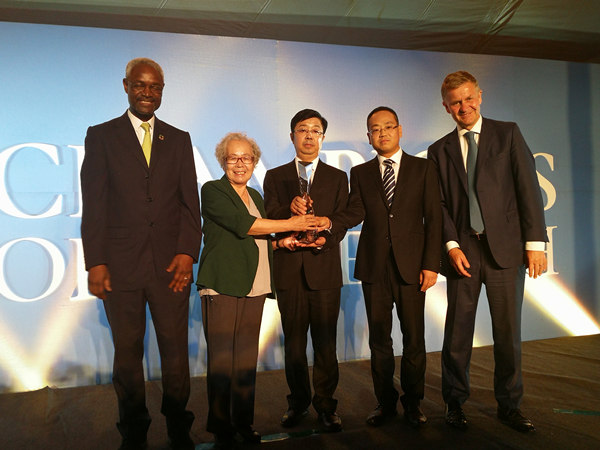

 Chinese folk song writer Wang Luobin lived in Qinghai for more than a decade in the 1930s and 1940s, during which he wrote some of his best-known pieces, including In a Far Away Fairy Land and The Crescent Moon Rises.
Chinese folk song writer Wang Luobin lived in Qinghai for more than a decade in the 1930s and 1940s, during which he wrote some of his best-known pieces, including In a Far Away Fairy Land and The Crescent Moon Rises.
 The Qilian Mountains is a northern outlier of the Kunlun Mountains, forming the border between the Qinghai and the Gansu provinces of northern China.
The Qilian Mountains is a northern outlier of the Kunlun Mountains, forming the border between the Qinghai and the Gansu provinces of northern China.
 The Qinghai Tibetan Culture Museum is the only comprehensive museum in the world collecting, studying and displaying Tibetan culture.
The Qinghai Tibetan Culture Museum is the only comprehensive museum in the world collecting, studying and displaying Tibetan culture.
 More than 100,000 birds gather at Qinghai Lake from the south every year and the monitoring system will check for epidemics and environmental protection.
More than 100,000 birds gather at Qinghai Lake from the south every year and the monitoring system will check for epidemics and environmental protection.
 When summer comes, the grand plain of Qinghai-Tibetan Plateau will be decorated by the blue sky, green plants and colorful flowers, attracting visitors from all over the world.
When summer comes, the grand plain of Qinghai-Tibetan Plateau will be decorated by the blue sky, green plants and colorful flowers, attracting visitors from all over the world.
 When most people think of Yushu, a Tibetan prefecture in Northwest China's Qinghai province, they remember the catastrophic earthquake that hit on April 4, 2012. But, it is Yushu's charming scenery that once attracted visitors and is now helping its post-quake revival.
When most people think of Yushu, a Tibetan prefecture in Northwest China's Qinghai province, they remember the catastrophic earthquake that hit on April 4, 2012. But, it is Yushu's charming scenery that once attracted visitors and is now helping its post-quake revival.
 The Qinghai Museum of Tibetan Culture is a pioneer tourist site in China based on a modernized exhibition and manifestation that fully applies advanced-tech and multimedia technology.
The Qinghai Museum of Tibetan Culture is a pioneer tourist site in China based on a modernized exhibition and manifestation that fully applies advanced-tech and multimedia technology.
 The Ta'er Temple, one of the six temples of the Gelug Sect of Tibetan Buddhism, was the birthplace of Tsongkhapa, the founder of the Gelug Sect.
The Ta'er Temple, one of the six temples of the Gelug Sect of Tibetan Buddhism, was the birthplace of Tsongkhapa, the founder of the Gelug Sect.
 Although they say autumn is not the best season to visit Qinghai Lake, in my eyes, it's a different kind of beauty. After taking a 25-hour trip by train, I finally reached my destination - Qinghai.
Although they say autumn is not the best season to visit Qinghai Lake, in my eyes, it's a different kind of beauty. After taking a 25-hour trip by train, I finally reached my destination - Qinghai.
 Summer is the best season to see Qinghai, and tourism is picking up in the province.
Summer is the best season to see Qinghai, and tourism is picking up in the province.
 The Nuwa myth inspired La Haiqing to build a garden and park celebrating Qinghai's unique rock formations.
The Nuwa myth inspired La Haiqing to build a garden and park celebrating Qinghai's unique rock formations.
 Thanks to an increasing precipitation and ecological protection measures, Qinghai Lake has been expanding for seven consecutive years to an area of 4,353.72 square meters, the largest coverage in 11 years.
Thanks to an increasing precipitation and ecological protection measures, Qinghai Lake has been expanding for seven consecutive years to an area of 4,353.72 square meters, the largest coverage in 11 years.





